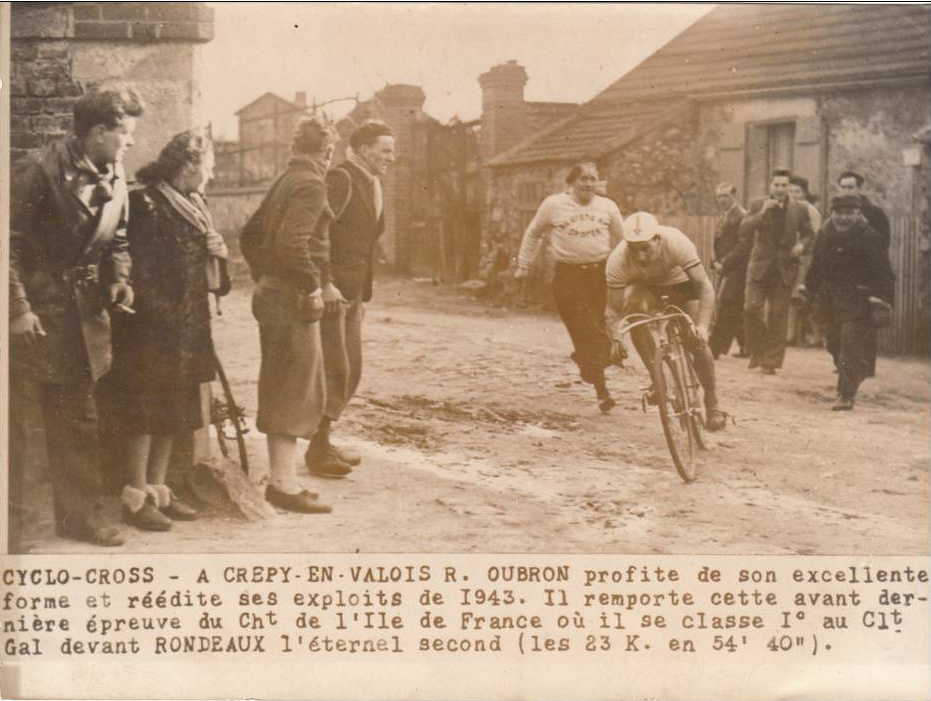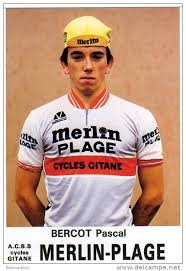|
It was my first day around the Tour de France, a rainy morning, July 14, 1982.
There was a time trial that holiday, around Valence d’Agen in the south, but it was too early to go out in the rain. I was with Roby Oubron, former cyclo-cross champion and then a mentor to Jonathan Boyer, the first American to ride in the Tour. Roby was a true son of France, a resister during the war who loved America. He met me for breakfast in the hotel and brought along a friend, but I did not catch his name. I tried to follow the shop talk in French, and they slowed it down enough for me to be included. We dawdled over breakfast, more than the basic croissant and café au lait. Then I asked the waiter for the check. “Ah, non!” Roby blurted. His friend, a polite older man in nondescript foul-weather gear, was also asking for the check, but I had gotten there first. Trying to overcome the language gap, Roby explained that his friend was wealthy, loved cycling, and always paid, always. I politely told the man that the New York Times would insist, journalistic ethics and all. The man seemed bemused by the concept of journalists grabbing the check, but he nodded his head gravely and thanked me. Later, in the car, racing around behind Boyer on the time trial, Roby explained to me, as best we could work out, that his friend was Guy Merlin, the founder and proprietor of Merlin leisure homes and camps all over France. Guy Merlin sponsored cycling teams, and his $20,000 condominium in the south of France was the largest prize for cyclists on that 1982 Tour, I found out later. We barreled around southwest France the next few days -- Rob Ingraham, Boyer’s agent, called Roby “Mario Andretti," for his heavy foot – and my short visit ended up in the Pyrenees, with the goats. Roby knew everybody. He would drive alongside Bernard Hinault on some narrow mountain pass and ask why he was making a breakaway. It was like sitting in a baseball dugout during a game with a wise elder like Ted Williams or Roy Campanella. I adopted Roby as my alternate father-figure and think of him every Quatorze. As long as Roby lived, he told the story of how I grabbed the check from Guy Merlin. * * * Bonus: a short video of Roby winning a cyclo-cross stage, July 12, 1945, apres la paix. http://boutique.ina.fr/video/AFE86003353/robert-oubron-remporte-le-cyclo-cross-delavigne.fr.html
Jen
7/13/2015 04:42:02 am
Probably a virtually unique experience for GM.
George Vecsey
7/13/2015 05:08:33 am
Unique à partir journalistes de cyclisme, c'est sur..xxG 7/13/2015 04:10:20 pm
Usually, I am satisfied with things and do not envy others.
Sam Toperoff
7/14/2015 12:16:09 am
So, here I am sitting in this Alpine village in the too-warm sun (we're in the beginnings of a drought that makes my small garden a major challenge) waiting for the Tour to come by next week. This year Gap--the nearest town and its mountains and dangerous roads--is pivotal to determining the winner of the Tour.in the very final stages and the riders will actually be here for three full days, coming to town in a long, grueling stage (mountains just so-so), then having a day of rest, then a day in the surrounding mountains, then finally they take off for Alpes d'Huez, the killer climb where so often the 2,000 mile race is decided. They'll come by our house on the 23rd, good thing because the police close all roads when the Tour's in town.
George Vecsey
7/14/2015 01:55:22 am
Thanks Alan. They were epic days and nights. I'll tell you both more Roby stories when we get together. Comments are closed.
|
Categories
All
|











